Cling, Alice
Alice Cling has lived most of her life in the area west of Kayenta and north of Black Mesa. She was born in 1946 at Cow Springs (near Tonalea, Arizona). She learned the Dineh way of making pottery from her mother, Rose Williams, and from her great-aunt, Grace Barlow. It was all part of growing up in her mother’s hogan, a place where making pottery and herding sheep and goats were all part of the family business.
Alice started dabbling with clay as a young girl and became a recognized Dineh potter only in the late 1980s. She graduated from Intermountain Indian School (in Brigham City, UT, and no longer in existence) and returned to the Shonto area. She became a Teacher’s Aide at the Shonto Boarding School in 1969, the same year she first took some of her pots to Bill Beaver at the Sacred Mountain Trading Pots near Flagstaff.
He accepted her pots but none of them sold. One day in 1976 she said she saw them still sitting on the shelf and “I said to myself, ‘Alice, they are ugly.'” So she took them home again and shaped and polished them differently to make them beautiful. She’s had no problem selling her work since.
Alice digs her clay from a special place near Black Mesa. She applies an iron-bearing red slip (used by the Hualapai Indians to decorate their faces) to her finished dry clay forms and polishes the surfaces with either a river stone or a Popsicle stick.
When firing, the ash that falls onto the pots from the juniper wood-fueled pit fire combines with the clay to produce the red-orange-purple-brown-black blushes (also known as fire clouds) on her pottery. After firing, she usually applies a light coating of warm piñon pine pitch and burnishes each pot to a distinctive low sheen.
Alice’s personal contribution to the renaissance of Navajo pottery is the magnificent coloration she achieves on her softly burnished forms. Except for fire clouds and the occasional raised rope or biyo’ around the shoulder or the opening, her pots are undecorated.
One of Alice’s pieces was exhibited in the Vice-Presidential Mansion in Washington, DC, in 1978 and her career took off from there. Her elegant, gracefully austere pots are included with the avant-garde potters in Pottery by American Indian Women, the Legacy of Generations exhibition and book by Susan Peterson, 1997, at the National Museum of Women in the Arts, Washington, D.C.
Some Exhibits that featured Alice’s work
- Our Stories: American Indian Art and Culture in Arizona. Heard Museum West. Surprise, AZ. June 2006 – October 2009
- The Navajo Folk Art Festival. Heard Museum North. Scottsdale, AZ. February 2002
- Fabric, Wood and Clay: Diverse World of Navajo Art. Heard Museum North. Scottsdale, AZ. January 2002 – July 2002
- Indian Market: New Directions in Southwestern Native American Pottery. Peabody Essex Museum. Salem, MA. November 2001 – March 2002
- The Art of the People. Gallup Cultural Center. Gallup, NM. August 2001
- The Legacy of Generations: Pottery by American Indian Women. Heard Museum. Phoenix, AZ. February 14, 1998 – May 17, 1998
- The Legacy of Generations: Pottery by American Indian Women. The Museum of Women in the Arts. Washington, DC. October 9, 1997 – January 11,1998
- Contemporary Art of the Navajo Nation. Cedar Rapids Museum of Art. Cedar Rapids, IA. 1994
- The Navajo Show and Sale. Arizona State Museum, University of Arizona. Tempe, AZ. December 1988
- Anii Ánáádaalyaa̕ ígíí (Recent Ones That Are Made): Continuity & Innovation in Recent Navajo Art. Wheelwright Museum of the American Indian. Santa Fe, New Mexico. July 10, 1988 – October 30, 1988
- In the Spirit of Tradition: The Heard Museum Craft Arts Invitational. Heard Museum. Phoenix, AZ. March 1986 – May 1986
- Alice Cling. Navajo Tribal Museum. Window Rock, Arizona. May 13-30, 1985
Some Awards Alice earned
- 2004 Santa Fe Indian Market, Classification II – Pottery, Division A – Traditional unpainted pottery: Best of Division
- 2004 Santa Fe Indian Market, Classification II – Pottery, Division A – Traditional unpainted pottery, Category 801 – Navajo style all forms: First Place
- 2001 Santa Fe Indian Market, Classification II – Pottery, Division A – Traditional unpainted pottery, Category 801 – Navajo style alternate forms: First Place
- 2001 Santa Fe Indian Market, Classification II – Pottery, Division A – Traditional unpainted pottery, Category 801 – Navajo style alternate forms: Third Place
- 1998 Santa Fe Indian Market, Classification II – Pottery, Division A – Traditional unpainted pottery, Category 801 – Navajo style, jars (with or without handles or lids): Second Place
- 1998 Santa Fe Indian Market, Classification II – Pottery, Division A – Traditional unpainted pottery, Category 801 – Navajo style, jars (with or without handles or lids): Third Place
- 1998 Santa Fe Indian Market, Classification II – Pottery, Division A – Traditional unpainted pottery, Category 802 – Navajo style, other forms: Third Place
- 1994 Santa Fe Indian Market, Classification II – Pottery, Division A – Traditional unslipped and unpainted pottery, Category 801 – Navajo style: Second Place
- 1993 Santa Fe Indian Market, Classification II – Pottery, Division A – Unslipped pottery, Category 801 – Navajo style: First Place
- 1992 Santa Fe Indian Market, Classification II – Pottery, Division A – Traditional unslipped and unpainted pottery, Category 801 – Navajo style: First Place
- 1992 Santa Fe Indian Market, Classification II – Pottery, Division J – Non-traditional, any forms: Best of Division
- 1992 Santa Fe Indian Market, Classification II – Pottery, Division J – Non-traditional, any forms, Category 1611 – Miscellaneous: First Place
- 1991 Santa Fe Indian Market, Classification II – Pottery, Division A – Traditional unslipped pottery, Category 801 – Navajo style: Second Place
- 1989 Santa Fe Indian Market, Classification II – Pottery, Division A – Traditional, Category 701 – Navajo pottery: First Place
- 1989 Santa Fe Indian Market, Classification II – Pottery, Division A – Traditional, Category 701 – Navajo pottery: Second Place
- 1988 Navajo Nation Fair Arts and Crafts Competition, Classification III – Pottery, patch-coated, Navajo: Best in Class and First Place
- 1988 Navajo Nation Fair Arts and Crafts Competition, Classification III – Pottery, patch-coated, Navajo: First Place
- 1987 Gallup InterTribal Ceremonial, Classification IV – Pottery, undecorated, any object: First Place
- 1983 Santa Fe Indian Market, Classification II – Pottery, Division A – Traditional unslipped and unpainted: First Place
Showing all 12 results
-
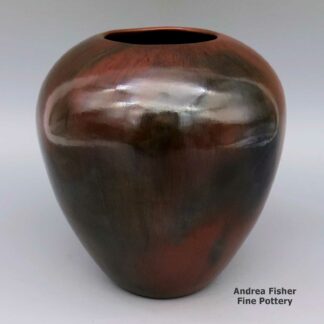
Alice Cling, cmnv2k210, Polished brown jar with fire clouds
$550.00 Add to cart -

Alice Cling, cmnv2k211, Brown jar with a carved biyo
$425.00 Add to cart -
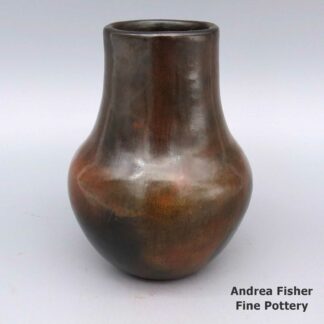
Alice Cling, zznv2g017, Red-brown jar with fire clouds
$250.00 Add to cart -

Alice Cling, zznv2g018, Brown jar with square opening
$295.00 Add to cart -

Alice Cling, zznv2g020m1, Brown jar with fire clouds
$295.00 Add to cart -
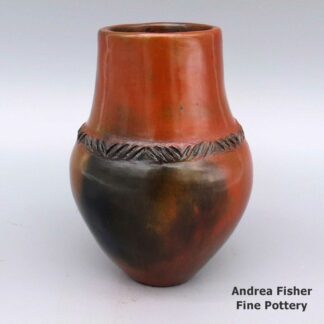
Alice Cling, zznv2g022, Brown jar with biyo and fire clouds
$275.00 Add to cart -
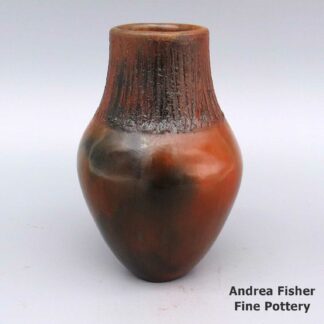
Alice Cling, zznv2g026, Brown jar with textured neck and fire clouds
$205.00 Add to cart -
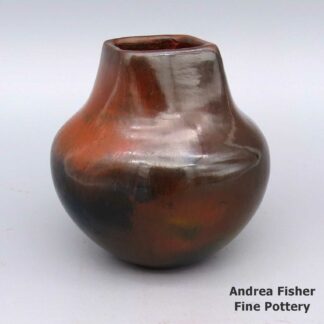
Alice Cling, zznv2g027m1, Brown-red jar with fire clouds
$175.00 Add to cart -

Alice Cling, zznv2g028m1, Brown jar with fire clouds
$350.00 Add to cart -

Alice Cling, zznv2g028m2, Brown jar with fire clouds
$350.00 Add to cart -
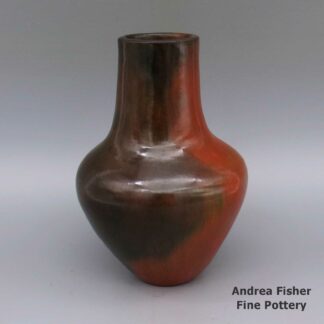
Alice Cling, zznv2g029m1, Brown jar with fire clouds
$450.00 Add to cart -
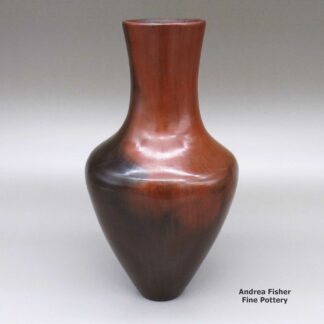
Alice Cling, zznv3b552, Red jar with fire clouds
$650.00 Add to cart
Showing all 12 results